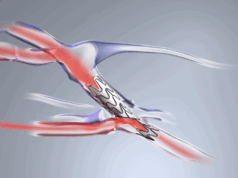 One talk at UK Kidney Week (4–7 June, Newport, Wales) moved the conference conversation onto the subject of sustainability, with Venkata Gullapudi (Leeds Teaching Hospitals NHS Trust, Leeds, UK) putting nephrology’s carbon footprint under the microscope with the presentation of an abstract reviewing the emissions and wastage resulting from one centre’s haemodialysis practices—and the effectiveness of changing them.
One talk at UK Kidney Week (4–7 June, Newport, Wales) moved the conference conversation onto the subject of sustainability, with Venkata Gullapudi (Leeds Teaching Hospitals NHS Trust, Leeds, UK) putting nephrology’s carbon footprint under the microscope with the presentation of an abstract reviewing the emissions and wastage resulting from one centre’s haemodialysis practices—and the effectiveness of changing them.
Gullapudi began by sketching out some background on the impact of haemodialysis, noting that the therapy imposes costs on the environment via its “usage of vast amount[s] of medical consumables, water and electricity”. In numbers, that translates to an estimated 3.8 tonnes of carbon dioxide-equivalent emissions (CO2e) produced annually secondary to haemodialysis provision for each patient, according to literature cited by Gullapudi. This, she suggests, “highlights the need for tackling carbon hotspots in our practices” in order to achieve the English National Health Service (NHS) goal of achieving net zero carbon emissions by 2040.
Across Leeds’ NHS trust, she outlined that there are 120 dialysis stations serving a population of 550 patients in eight units in 2022. That, she calculated, works out to 85,800 dialysis sessions per year. During each dialysis session, Gullapudi stated, approximately around 350–400l of raw water is utilised. Of this, around one to two thirds are discarded during the process of purifying the water.
She set out the process of preparing the stations for patients, with dialysis machines rinsed/disinfected (based on the unit protocol) and lined with new set following one dialysis session ready for the next. These lines are primed with dialysis fluid prior to commencement of dialysis—though, once primed, “there can be a period when dialysis machines continually run while waiting for patients to arrive to the unit”, during which time they consume significant amounts of electricity and dialysis fluid.
Having reviewed this process, the authors behind the abstract identified a set of areas with scope for improvement in reducing wastage. Some of the measures they implemented include reducing the idle running time of the dialysis machine by priming the machine when patient arrives or by dropping the rate of dialysis fluid flow to minimum whilst waiting for the patients, as well as reducing the number of disinfection cycles. They also describe “being creative with the storage facility usage in dialysis units which might allow reduction in the number of deliveries of consumables”. This latter consideration, they state, led to their cutting their units’ weekly pharmacy deliveries to fortnightly.
“To understand the impact of these proposed changes,” Gullapudi explained, “we collected data on water consumption, acid power and water usage during each minute of haemodialysis machine run time and with each disinfection/ rinse cycle. We also collected information about the average idle waiting times of primed haemodialysis machine for patient to arrive.”
Using the data, the researchers calculated carbon emissions of the above consumables using the resources provided by the centre for sustainable healthcare team. They implemented their measures in one satellite unit initially. This led to what Gullapudi described as a “huge amount of power and water saved”, amounting to 2,575.74Kwh of energy and 282.26m3 of water, alongside a 3,508.60l acid consumption reduction.
The impact of implementing similar changes across the entire Leeds haemodialysis service is predicted by the researchers to reduce acid consumption over a year by more than 30,000 KWh of power, 3387m3 of water and 42,000l of acid; this amounts to reduction in CO2 emissions of 14,546.03kg/CO2e/year. They also suggest that this could save the trust £29,526.94 over the twelve-month period. Gullapudi adds that future reforms could include the recycling of acid canisters.
“We are trying to engage our regional renal teams to adopt similar changes by rolling out this work,” she concluded, before a short question-and-answer session. In that session, she highlighted that small changes can have a big impact on sustainability in a dialysis unit. Addressing a question on concerns around reducing disinfection, she stated that “we have not come across increased blood borne virus infections across our dialysis service during this period of change, which was reassuring”.












